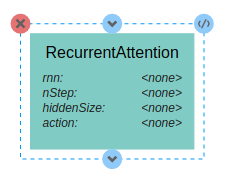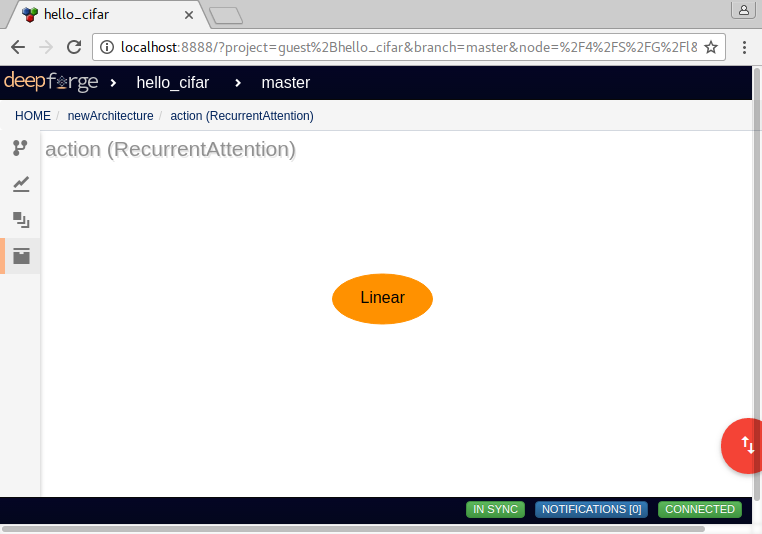Custom Layers¶
DeepForge supports the creation of custom neural network layers using Torch7 and the easy usage of these layers in the visual architecture editor. Before creating custom layers, it is recommended to read about creating custom layers in Torch7.
A new custom layer can be created from the “add layer dialog” in the architecture editor. When creating a layer, DeepForge provides a code editor for creating custom neural network layers prepopulated with a basic template for defining the custom layer.
After defining the layer in the layer editor, DeepForge will provide this layer in the architecture editor and expose any configurable attributes for the layer. These attributes are parsed from the layer definition.
Best Practices¶
Here are a couple best practices to keep in mind when defining custom neural network layers:
- Use type assertions for layer, boolean attributes
- Return
selfwhen defining setter functions
Type assertions should be used when defining layer attributes (ie, constructor arguments or arguments to a setter function). For example, consider the following layer definition for RecurrentAttention which accepts an action layer argument to its constructor.
local RecurrentAttention, parent = torch.class("nn.RecurrentAttention", "nn.AbstractSequencer")
function RecurrentAttention:__init(rnn, action, nStep, hiddenSize)
parent.__init(self)
assert(torch.isTypeOf(action, 'nn.Module'))
assert(torch.type(nStep) == 'number')
assert(torch.type(hiddenSize) == 'table')
assert(torch.type(hiddenSize[1]) == 'number', "Does not support table hidden layers" )
self.rnn = rnn
-- we can decorate the module with a Recursor to make it AbstractRecurrent
self.rnn = (not torch.isTypeOf(rnn, 'nn.AbstractRecurrent')) and nn.Recursor(rnn) or rnn
-- samples an x,y actions for each example
self.action = (not torch.isTypeOf(action, 'nn.AbstractRecurrent')) and nn.Recursor(action) or action
self.hiddenSize = hiddenSize
self.nStep = nStep
self.modules = {self.rnn, self.action}
self.output = {} -- rnn output
self.actions = {} -- action output
self.forwardActions = false
self.gradHidden = {}
end
In this example, assert(torch.isTypeOf(action, 'nn.Module')) enforces that the action variable is another neural network layer. After defining the layer, DeepForge will parse the layer definition and create a visual representation for use in the architecture editor. As this assertion enforces that action is a neural network layer, DeepForge will update itself accordingly; in this case, editing the attribute will allow the user to hierarchically create nested neural network architectures to be passed as the action argument to the constructor.
An example of the generated visual model for the RecurrentAttention is provided above. This layer has attributes for each of the constructor arguments defined in its definition. Clicking on the <none> value for the action attribute will then allow the user to provide layer inputs as shown below.
The second best practice is to make sure to return self in any setter functions. An example of this can be found in the setters in the SpatialMaxPooling layer shown below:
function SpatialMaxPooling:ceil()
self.ceil_mode = true
return self
end
function SpatialMaxPooling:floor()
self.ceil_mode = false
return self
end
Returning self in setter functions is a good convention when defining neural network layers in Torch7 as it promotes simple and legible code such as
net:add(nn.SpatialMaxPooling(5, 5, 2, 2):ceil())
where net is a container like a Sequential layer. DeepForge enforces this convention and, if it finds a setter function (which also returns self) in the layer definition will expose the internal variable (in this case ceil_mode) to the user in the visual editor.

